Ask a child to draw a house and he”ll do the following:
He shall draw a square for the wall, a triangle for the roof, and then he”ll add a rectangle for the door. But, when it comes to adding windows to his drawing, he realizes that this is where his individuality lies. It is through the windows that a young child leaves a part of himself in the drawing.
Similarly, when it comes to designing a home, how much of a structures character lies on the types of windows used is simply unbelievable. Therefore we have put together this guide that shall get you acquainted with the various different types, shapes and sizes.
Parts of Window
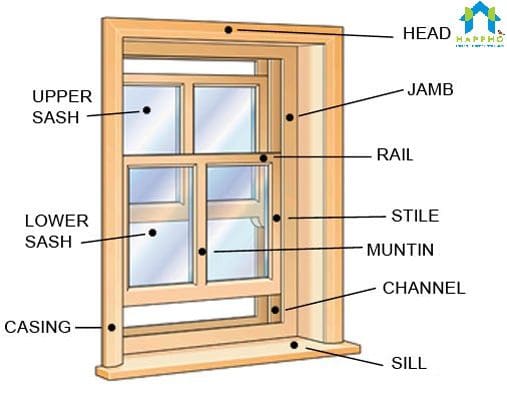
Sizes
The following chart shows the standard sizes of masonry openings and window sill heights that may be used in a building or residence. The chart has been taken from Manual for Doors and Window Details for Residential Buildings.
Types of Windows
1. Double Hung Windows
These windows have two vertical sashes that slide up and down in the frame. In case only the bottom sash is moveable, it is known as a single-hung window.

advantage of Double Hung Windows:
- Best for circulation of air. Cool air enters through the lower opening and warm air exits through the upper opening.
- Aesthetically pleasing.
Disadvantages of Double Hung windows
- Can be hard to lift, especially for older people or those with back problems.
- If not properly maintained, the double- hung windows may have slippage problems where the top sash will tend to slide down and not stay up all the way.
2. Stationary Windows
Stationary windows do not open. They are however helpful for taking care of irregularly shaped openings. It is similar to a picture window, however, it has generally has a thicker frame and is used alongside an operable window.
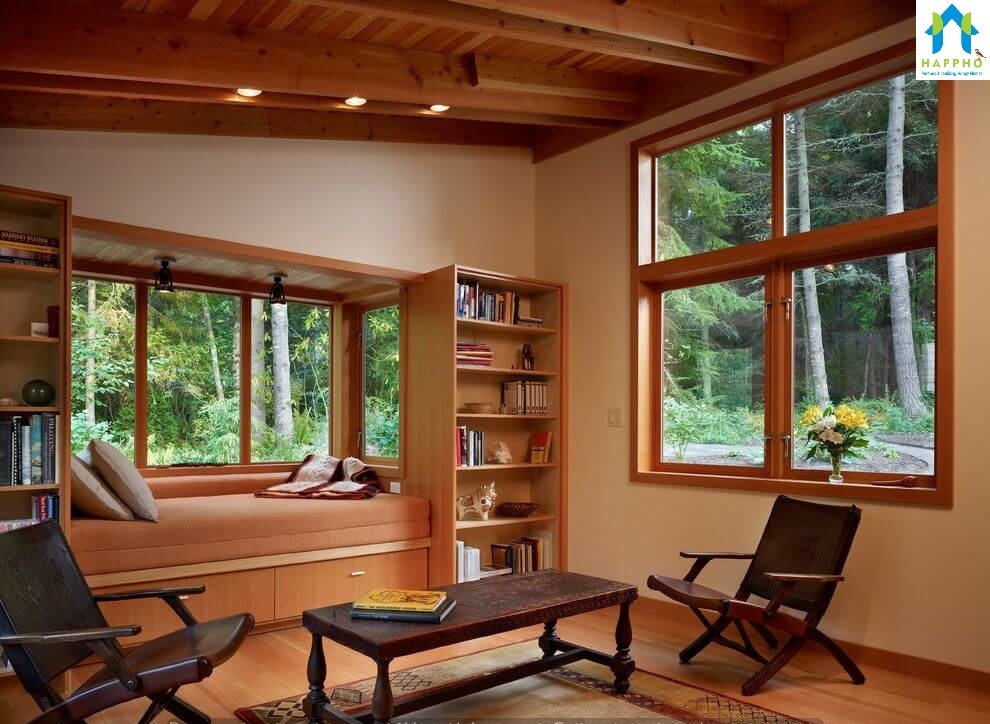
Advantages of Stationary Windows
- This window provides a large viewport through which one can enjoy that beautiful view with little optical obstruction.
Disadvantages of Stationary windows
- The window is inoperable. It does not open and therefore is useless when it comes to ventilation and air circulation.
3. Casement Windows
Casement windows or hinged windows open like door shutters – outwards in an arc.

Advantages of Casement Windows
- They are undivided vertically therefore, let in a lot of light.
- They are easy to open.
- They are efficient. When wind blows against a casement window, it only reinforces the seal.
- Design of the shutters can be customized with limitless possibilities.
4. Bay Windows
This window projects outwards from an outside wall.
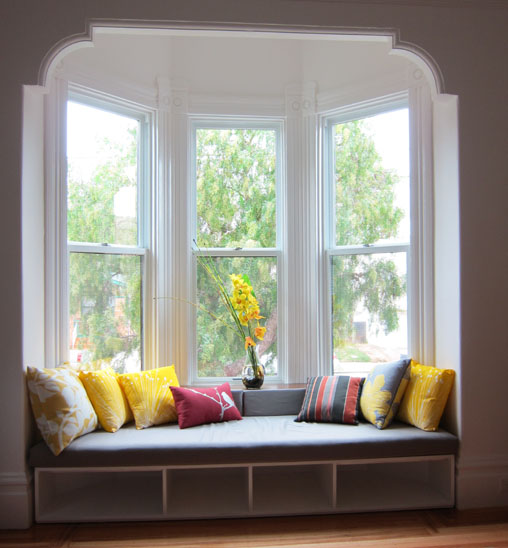
Advantages of Bay Windows
- This type of window makes the room appear larger. The window may be used for sitting or storage.
- The window allows light to enter from a wider variety of angles, thereby illuminating the room better.
- Bay windows are extremely versatile and can easily be used in any room – the bedroom, living room, kitchens, etc.
Disadvantages of Bay Windows
If not constructed properly, then a bay window can result in a number of structural problems which can and may cause you to dish out even more money to repair them. When the foundation of a building settles, if the Bay window is not properly supported, it may result in sagging of the Bay window.
5. Transom Window
Transom windows are small detail windows over doors or maybe other windows. They are generally fan shaped or rectangular.
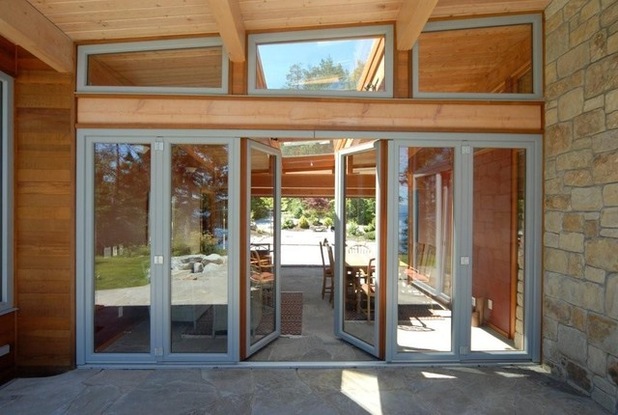
Advantages of Transom Window
- These adds another layer of aesthetics to the design of a building.
- They allows light to enter, but also maintain a degree of privacy due to its height.
Disadvantages of Transom Window
- This window, being fixed, doesn”t allow ventilation or air circulation.
- Depending on the shape of the transom window, they can become quite expensive.
- They are difficult to clean due to their position above doors and other windows.
6. Awning Window
This type of window is hinged on the top and opens outwards.
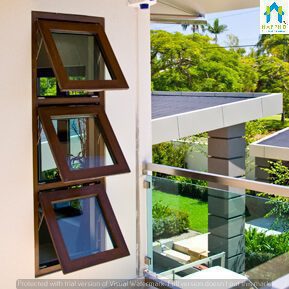
Advantages of awning Window
- It is easy to open and close.
- They are good for natural ventilation.
- They come in handy during the rainy season, where the window can be slightly opened to allow air circulation without exposing the interiors to rain.
Disadvantages of Awning Window
As the window usually has it horizontal dimensions greater than the vertical dimensions, it is not normally used as the main window, and must be supported by casement or double- hung windows.
7. Picture Window
This is a large fixed window that is used to frame a view. It is similar to a stationary window.
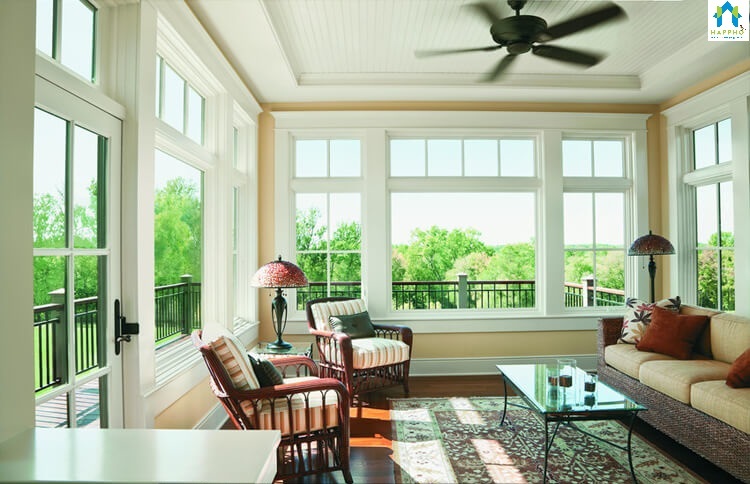
Advantages of Picture Windows
- Picture windows provide the perfect view, and look good as well on the exterior facade.
- They provide an inlet for natural light and heat and help keep the room warm during winter.
Disadvantages of Picture Window
- The main disadvantage of a picture window is that it is inoperable.
- It does not provide ventilation and although it allows heat to enter, it does not allow heat to escape.
8. Sliding Window
A sliding window has generally two panels per module, mounted on rails, out of which at least one of them slides horizontally to open.
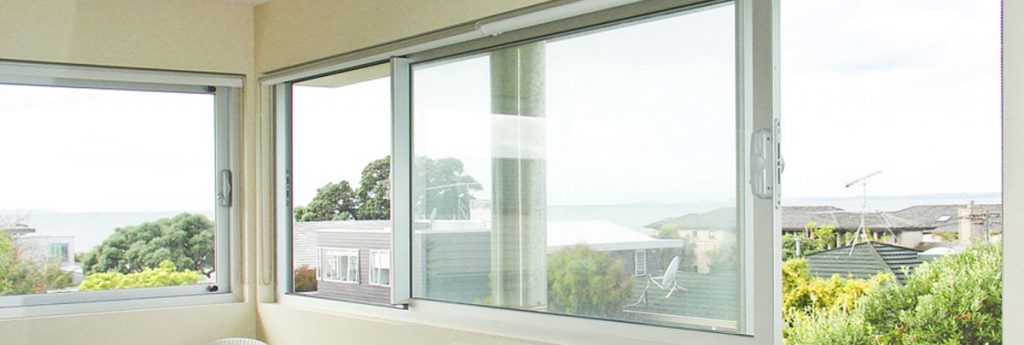
Advantages of Sliding Window
- These windows have fewer parts than the conventional windows. As a result they are durable, and easy to maintain.
- They are simple to open and close as they do not use complex parts such as hinges and pulleys.
Disadvantages of Sliding Window
Cleaning of slider windows can become quite a difficulty. Although the internal part of the slider window is easy to clean, the external part presents a different problem. Unlike other windows, these windows cannot be tilted for ease of access when it comes to cleaning them.
– Rhiddhit Paul
 (+91) 7249196273
(+91) 7249196273
